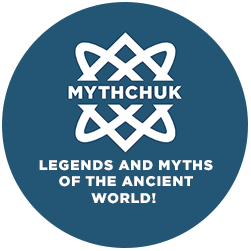The myth of Aeneas: The Trojan Hero Who Became the Father of Rome
- Main
- >
- Roman Mythology
- >
- Roman Myths and Legends
- >
- The myth of Aeneas
His homeland was destroyed by the Greeks, yet he became the forefather of Rome. And at the end — a surprising fact about his descendants...
The myth of Aeneas is one of the most important in Roman tradition. It took shape in the 1st century BCE, based on both Greek and Roman sources, and is most famously presented in Virgil’s epic poem, the Aeneid. The story follows the Trojan hero Aeneas as he flees the fall of Troy, journeys across the seas, encounters gods, lovers, and enemies — ultimately reaching Italy to lay the foundations of what would become Rome.
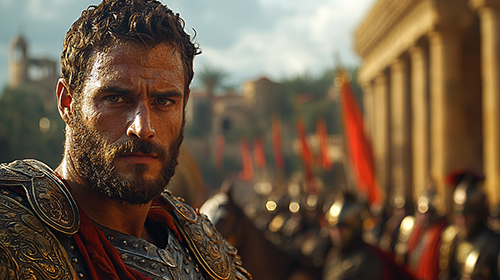 The myth of Aeneas
The myth of AeneasThe Fall of Troy — The Beginning of a Great Journey
The story begins in tragedy. The Trojan War, one of antiquity’s most famous conflicts, ends in deception: the Greeks bring a wooden horse into the city. That night, Troy is destroyed. Aeneas, son of Anchises and the goddess Venus (Aphrodite), receives a divine command — not to die, but to escape.
With his elderly father on his shoulders, his son Ascanius (also known as Iulus) by his side, and carrying the household gods — the Penates — he flees the burning city. In this moment, a new mission is born: not vengeance, but rebirth. With a handful of Trojans, Aeneas sets off on his fateful journey.
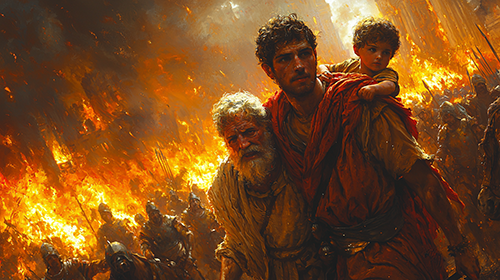 The Fall of Troy
The Fall of TroyTrials at Sea: Goddesses and Ordeals
Aeneas’s fate is not a simple voyage. He is subject to the will of the gods. Juno, who harbors a grudge against the Trojans for Paris's judgment (he did not choose her as the fairest), does everything in her power to thwart him. She sends a storm that drives Aeneas's fleet to the shores of Carthage.
 Trials at Sea
Trials at SeaCarthage and Queen Dido: A Love Turned Tragic
In Carthage, Aeneas finds shelter with Queen Dido. A powerful love blossoms between them. According to the sources, the goddesses Juno and Venus conspired to bring them together, hoping to alter fate.
But Mercury, sent by Jupiter, reminds Aeneas of his destiny: “Italy awaits. You cannot stay.” Though torn, Aeneas leaves Dido. She curses him and takes her own life. This tragic scene is one of the most emotionally charged in the Aeneid, and later Romans used it to explain the deep enmity between Rome and Carthage.
 Aeneas and Queen Dido
Aeneas and Queen DidoDescent into the Underworld: Meeting the Shade of His Father
After more travels and battles, Aeneas arrives at Cumae, where the Sibyl guides him into the underworld — a pivotal moment in the epic. There he meets the spirit of Anchises, who reveals to him the future of Rome.
Anchises shows Aeneas the souls of those yet to be born — among them Marcus Aurelius, Scipio Africanus, and even Emperor Augustus. Aeneas understands: his mission is not personal but civilizational — the beginning of a people destined to rule the world.
 Descent into the Underworld
Descent into the UnderworldArrival in Italy and the War with the Latins
Aeneas finally reaches the shores of Latium, but instead of peace, he finds war. King Latinus, initially welcoming, promises Aeneas the hand of his daughter Lavinia. But another suitor, Turnus, feels betrayed and leads the Rutulians and Etruscans against the Trojans.
A brutal war unfolds. Turnus kills Aeneas’s close ally Pallas. In the climactic duel, Aeneas defeats Turnus. When Turnus pleads for mercy, Aeneas sees Pallas’s belt — and, overcome by rage, kills him. Thus ends Virgil’s Aeneid.
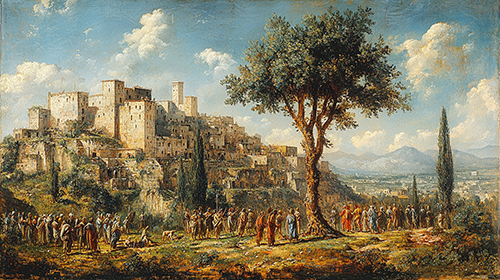 Arrival in Italy
Arrival in ItalyFounding of Alba Longa: The Lineage of Romulus and Remus
Though Virgil ends the poem with Turnus’s death, ancient sources continue the tale. Aeneas founds the city of Lavinium, named after his wife. His son Ascanius (Iulus) later establishes Alba Longa — the city from which Romulus and Remus will one day be born.
Thus, Aeneas is honored as the forefather of the Roman people. According to Livy and Dionysius of Halicarnassus, the Romans traced their lineage through Aeneas all the way to Jupiter himself.
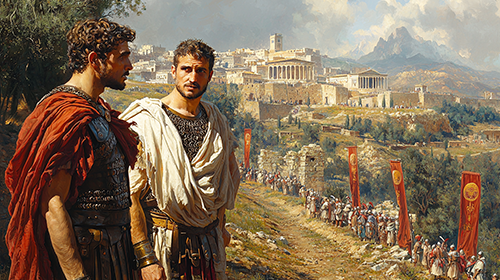 Romulus and Remus
Romulus and RemusMore than a Myth: The Birth of Roman Identity
The myth of Aeneas is more than just an epic. It is Rome’s attempt to explain its origins, to fuse Greek heroism with Latin soil. It laid the foundation for Roman identity: duty, sacrifice, and submission to divine will.
That’s why Aeneas appeared in temples, on coins, in frescoes, and was celebrated in state rituals. Even today, his name is found on arches, statues, and he continues to inspire art, literature, and nationalism.
